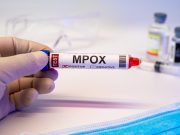Modest Decline Seen in Portal Messaging With Billing Implementation
8.8 percent decrease seen in volume of patient-initiated medical advice message threads in six months after implementation
U.S. Health Care Spending Reached $4.9 Trillion in 2023
Health sector's share of the economy was similar in 2023 and 2022, but lower than in 2020 and 2021, during height of COVID-19
2000 to 2024 Saw Rise in Physician Union Petitions
Most organizing efforts motivated by nonfinancial factors
Tecovirimat No Aid for Time to Lesion Resolution With Mpox
Additionally, interim analysis shows that the antiviral is safe but has no effect on pain among adults with mild-to-moderate clade II mpox
FDA Expands Approval of Vtama to Include Atopic Dermatitis
The nonsteroidal topical treatment is approved for patients 2 years and older
FDA Approves Nemluvio for Moderate-to-Severe Atopic Dermatitis
The monoclonal antibody treatment is for patients ages 12 years and older
Thicker Melanoma Tumor Size Tied to Higher Risk of 20-Year Melanoma-Related Death
Findings for primary tumors of 0.8 to 1.0 mm versus those <0.8 mm
Low-Dose Oral Minoxidil Effective for Alopecia in Breast Cancer
All patients receiving surgery/radiotherapy alone or with chemotherapy had improvement or stability of alopecia with LDOM
Dupilumab Efficacious for Atopic Dermatitis in Young Children
Findings seen for children with and without comorbidities, such as asthma, allergic rhinitis, food allergies
Celiac Disease Linked to Higher Risk for Developing Alopecia Areata
Risk 25 percent higher when comparing matched individuals with and without celiac disease



















